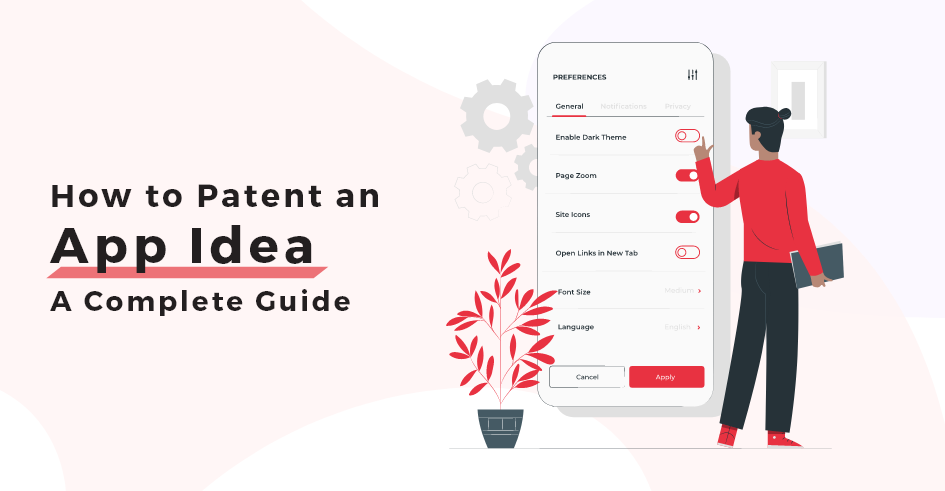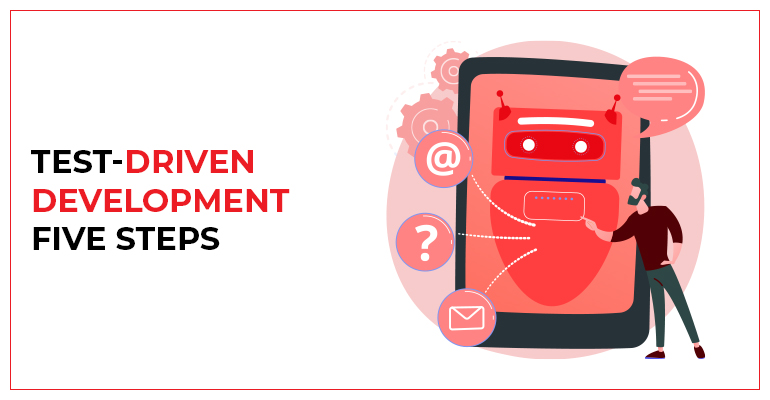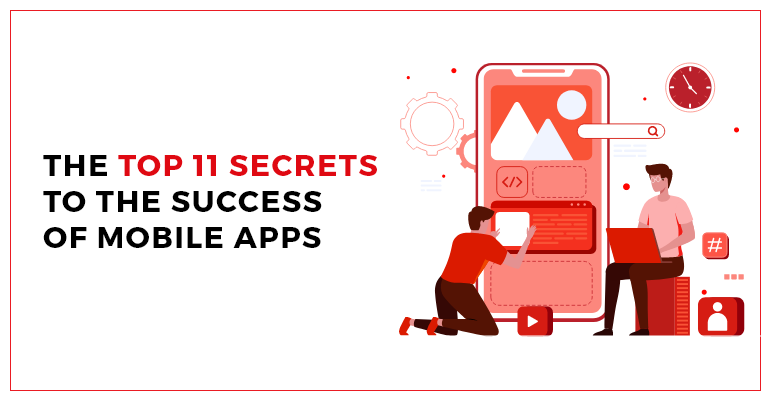Overview: For entrepreneurs and startups with brilliant app ideas in mind, it is crucial to know how to patent your idea before discussing it with anyone. In this blog, we will provide a complete guide on how to patent an app idea with a simple process. So why wait? Learn how to patent an idea below.
The reason we are here is the question, “Can I patent an app idea?” The answer is this: Yes. Yes, for sure, you can. The next question that arises is, “How to patent an app idea?” The answer is TechnBrains. Being the Next-Gen mobile app development company in the USA, we are here to give you a detailed guide about how to patent an app idea, Types of Patent Applications, the Eligibility Criteria to Qualify for A Patent, and how TechnBrains can assist you with it.
The Census Bureau, An official website of the United States government, projected that there have been 32,219 new business startup ideas during September 2023. With such a high competition, you might be wondering if my idea will be patented. Will it get to the market before anyone does?
The answer is App ideas can be protected under intellectual property law, particularly trademark, patent, and mobile app copyright or patent law. However, you may be wondering whether you can patent your app. Many startups and entrepreneurs believe that before starting the mobile app development process, their app idea is essential in order to prevent others from copying, using, or selling it.

What Does it Mean to Patent a Mobile App Idea?
Patenting a mobile app idea means legally securing your intellectual property rights to your invention. In essence, it grants you exclusive rights to make, use, and sell your app for a specified period, typically 20 years. During this time, no one else can create a similar app without your permission. Patenting ensures your app remains unique and can lead to significant benefits in the long run.

What are the Different Types of Patent Applications?
When exploring the process of how to patent an app idea, it’s important to understand that there are two distinct types of patent applications: the Provisional Application and the Non-Provisional Application. Let’s delve into these in detail below:
Provisional Application
A Provisional Patent Application (PPA) is a fantastic starting point when you’re eager to safeguard your groundbreaking app idea. Before diving into the full-fledged patent application, this preliminary step is a lifesaver, especially in the first crucial 12 months. It grants you the treasured “Patent Pending” status, protecting your concept from copycats.
During this year, you have the golden opportunity to refine your “How to Patent an App Idea,” seek potential investors, or conduct market tests with a Minimum Viable Product (MVP). The best part? It’s remarkably cost-effective, saving you from the immediate need to hire a patent attorney.
Over 90% of utility patents are approved by the U.S. government for new or valuable inventions. If you’re ready to kickstart your app journey with a Provisional Application, TechnBrains can guide you through the process seamlessly.
Pro tip: This option is swift and efficient, but remember, it won’t transform into a final patent automatically.
What to Include in Your Provisional Patent Application:
- Details about the inventor’s residence.
- A concise yet captivating title for your invention.
- Attorney information (if applicable).
- A docket number to keep things organized.
- An address for correspondence.
- Specifics about any involved U.S. government agencies (essential when filing within the U.S. via USPTO).
Non-Provisional Application
On the flip side, the Non-Provisional Application is the heavyweight champion of patent filings. Unlike its provisional counterpart, it’s an extensive and intricate process. This is where you transform your innovative concept into a full-fledged patent, ready for evaluation and approval by the USPTO.
In this realm, claims and specifications are your bread and butter. You need to provide a comprehensive description of your invention, including legally defined claims to protect your intellectual property. It’s not a stroll in the park, but the rewards are worth it.
Pro tip: If you’re seeking legitimacy and long-term patent protection, filing a Non-Provisional Application is your ultimate destination in the journey of How to Patent an App Idea.
So, whether you’re starting with a provisional application or diving straight into the non-provisional one, remember that every successful app journey begins with securing your unique idea. TechnBrains is here to make your patenting process smoother so you can focus on what you do best – innovating and creating remarkable apps.

Types of Mobile App Ideas You Can Patent
Developers and entrepreneurs are continually coming up with groundbreaking app ideas that can transform the way we interact with technology. The good news is that many of these innovative app concepts, including How to Patent an App Idea, can be protected through patents. Let’s explore the various categories that will serve as a mobile app patent example. Let’s start:
1. Mobile Gaming Apps
Mobile gaming has become a massive industry, and it’s not limited to just casual games. If you have a unique and innovative concept for a mobile game that hasn’t been seen before, you may be able to secure a patent for it. This can encompass anything from novel gameplay mechanics to inventive in-game features.
2. A.R./VR-based Apps
Augmented Reality (A.R.) and Virtual Reality (V.R.) are taking mobile apps to a completely new level. We can say that for a fact because our A.R. V.R. app development has helped people revolutionize their business in unimaginable ways. Apps that blend the digital and physical worlds or immerse users in virtual environments offer exciting opportunities for patent protection, especially if you are wondering how to patent an app idea. Whether it is an A.R. navigation app or a VR-based training simulator, inventive ideas are ripe for patenting.
3. Healthcare Apps
The healthcare sector has seen a surge in mobile apps designed to improve patient care, streamline processes, and enhance medical research. Suppose you have a unique healthcare app idea that you are wondering “How to build a Healthcare App.” This is your sign to start building it. It can monitor health metrics, provide telemedicine services, or assist with medication management, and it may qualify for patent protection.
4. IoT Apps
The Internet of Things (IoT) has revolutionized the way devices and objects communicate with each other. IoT apps that facilitate this communication, control smart home devices, or enhance automation can be innovative and patent-worthy. If you’re wondering how to patent an app idea in the realm of IoT, our guide can help you navigate the process effectively. Competent and skilled engineers can help you with IoT app development. You can provide an idea for mobile apps that offer improved connectivity with an all-inclusive integration of appliances, devices, and machines so that everything is easy to operate, redefining the concept of interconnectedness.
5. Social Networking Apps
Social networking apps continue to redefine how we connect and share information. Unique features or methods for enhancing user engagement and interaction within a social network app can be idea patented. If you’re wondering How to Patent an App Idea, read on for essential guidance on protecting your innovation.
6. Enterprise Apps
In the corporate world, mobile apps have become essential tools for improving productivity and communication. If your app idea is tailored to meet specific business needs, you should definitely go for enterprise app development. This app will let you offer novel solutions or enhance workplace efficiency, and it may be eligible for patent protection.
7. Education and Learning Apps
With the growth of e-learning and digital education, there’s a wealth of opportunities for inventive education apps. Whether it’s a gamified language learning app or an innovative virtual classroom, educational apps that offer unique teaching methods or features can be considered for patents.
In the context of How to Patent an App Idea, these are just a few examples of the diverse mobile app categories that can potentially receive patent protection. However, it’s essential to work with a qualified patent attorney to determine the eligibility of your specific app idea and navigate the patent application process effectively.
Remember that patents not only protect your intellectual property but can also provide a competitive edge in the dynamic world of mobile app development. If your app idea falls into one of these categories, such as How to Patent an App Idea, and meets the criteria for patentability, it’s worth exploring the patent application process to safeguard your innovative creation.
How to Check Whether Your App Idea Has Already Been Patented or Not?
Before embarking on the exciting journey of developing your mobile app idea and learning how to patent an app idea, it’s essential to ensure that your innovation stands out in the crowded digital landscape. One critical step in this process is determining whether your app concept has already been patented by someone else.
Patenting your app can provide valuable protection for your intellectual property, but it’s crucial to confirm its uniqueness. In this guide, we will outline a series of steps to help you thoroughly investigate the patent landscape and ensure that your app idea remains original and ready for further development. Determining If Your App Idea Has Been Patented:
-
Prior Art Search:
Begin by conducting a prior art search. This involves searching through existing patents, publications, and online resources to check if a similar app idea has already been patented. You can utilize patent databases like Google Patents, the United States Patent and Trademark Office (USPTO), or other global patent offices’ databases.
-
Consult a Patent Attorney:
In your quest to learn how to patent an app idea, it’s essential to enlist the expertise of a patent attorney or a professional patent search service. They have the knowledge and experience to perform comprehensive searches, ensuring you don’t overlook any potential similar patents.
-
Keyword Searches:
Use relevant keywords and phrases that describe your app’s core features and functions. This will help you uncover patents that might be relevant to your idea.
-
Classifications and Categories:
Patents are organized into specific classifications and categories based on their subject matter. Understanding the relevant classification for your app idea can aid in a more targeted search.
-
In-Depth Analysis:
Review any patents that appear to be similar to your idea. Pay close attention to their claims, which define the scope of protection. If the existing patents don’t cover precisely what your app aims to do, there might still be room for your unique concept.
-
Global Search:
If your app has international potential, such as when considering How to Patent an App Idea, don’t limit your search to a single country. Explore patent databases from various countries to ensure comprehensive coverage.
-
Non-patent Literature:
Besides patents, explore non-patent literature, such as academic papers, industry publications, and technical documentation. Sometimes, similar concepts may exist in these sources.
-
Professional Assistance:
If your app idea is complex or potentially groundbreaking, consider hiring a patent attorney to conduct a thorough and professional patent search. They can provide valuable insights and guidance.
Suppose your app has international potential, such as when considering How to Patent an App Idea, don’t limit your search to a single country. Explore patent databases from various countries to ensure comprehensive coverage.

How to patent an app idea in 7 steps
So, you’ve conceived a groundbreaking mobile app idea, and now you want to ensure it’s protected. You can patent an app idea in just 7 simple steps. Here’s a detailed roadmap:
Step 1: Choose Your Patent Type
First, you need to decide the type of patent you want for your mobile app. There are three main types available: utility, design, and plant patents. Begin by determining which aspects of your mobile app you want to patent:
● Utility Patents
Duration: 14-20 years
In the context of How to Patent an App Idea, it’s vital to note that these patents primarily focus on safeguarding the core functionalities of your app. This includes unique algorithms, processes, features, and technical components such as data structures and hardware integrations.
● Design Patents
Duration: 14-20 years
If the aesthetics of your mobile app’s user interface (UI/UX) and logo design are central to its appeal, you can obtain a design patent to protect its visual charm.
● Plant Patents
Duration: 20 years
Individuals who invent, discover, and asexually reproduce a new and distinct plant variety receive a type of intellectual property protection known as plant patents. Unlike utility patents, which protect new and useful processes, machines, or compositions of matter, or design patents, which protect the ornamental design of an article of manufacture, plant patents specifically focus on protecting new plant varieties.
To qualify for a plant patent, the following criteria must be met:
- Novelty: The plant variety must be new, meaning it has not been previously known or available to the public. It should be different from any existing plant varieties.
- Distinctiveness: The plant variety must be distinct from other known varieties. It should have unique characteristics that set it apart from existing plants.
- Asexually Reproduced: Plant patents are granted for plants that are asexually reproduced, which means they are not reproduced from seeds but through methods like grafting, budding, cutting, or tissue culture.
- Non-Obviousness: The new plant variety should not be an obvious variation or extension of an existing plant.
Plant patents protect the inventor for 20 years from the date of filing, during which they have exclusive rights to propagate, sell, use, and how to patent an app idea the patented plant. After this period, the plant variety enters the public domain, and others are free to use and propagate it.
Step 2: In-Depth Patent Research
Before you embark on the patenting journey, it’s essential to conduct thorough research. This serves as a guide to discover idea patented, so that you may add innovations to it. This involves:
- Identifying any existing patents related to your app concept.
- Gaining insights into the patent application process.
- Perform global research about your app idea.
Having no similar patent idea can help you increase your chances of getting your idea patented.
Step 3: Consult a Patent Lawyer
Considering how to patent an app idea, Navigating the legal intricacies of patent applications can be complex. It’s highly advisable to consult a qualified patent attorney, especially one with expertise in software patenting. A patent lawyer will help you file, prepare, and file your patent application. Below is a checklist on what to include in a patent application:
The Invention
You’ve come up with a fantastic mobile app idea, something no one has seen before. You’ve found a way to make people’s lives easier, more enjoyable, or more efficient. That’s your invention, and it deserves protection so this needs to be the top priority in your application.
How Your App Works
Your app’s inner workings are like the secret sauce of a famous recipe, only you know it which make it second on the list. It’s the magic that makes everything happen. When you tap a button, swipe a screen, or see results in your app, there’s a complex system behind it.
Visual Aids
Think of diagrams and drawings as your app’s blueprints when considering how to patent an app idea. They help explain how your app functions. These visuals can be instrumental in illustrating your app’s unique features to patent authorities.
App Design
Your app’s design is like its personality. It’s not just about how it looks, but also how it feels to use. It’s the user interface, the colors, the layout – everything that makes your app user-friendly and enjoyable.
Step 4: Prepare Patent Documents
While this step can be paperwork-intensive, it’s crucial to provide a robust foundation for your patent application. Your application should comprise the following elements:
- Specification: A detailed description of your invention.
- Declaration of Your Invention or Oath: A formal statement affirming your invention’s originality.
- Data Disclosure Statement: When considering how to patent an app idea, it’s crucial to investigate any prior disclosures related to your invention.
- Entity Status Form: A document confirming the legal entity filing the patent.
- Claims: Explicitly defined statements that detail the scope of protection sought.
- Application Data Sheet: Administrative details about the application.
- Drawings: Visual representations to enhance understanding.
- Patent Cooperation Treaty (Optional): For international patent filings.
- Cover Sheet: Administrative information about the application.
- Fee Sheet: Breakdown of the required fees.
- Application to Make Special (Optional): If applicable.
Step 5: File Provisional or Non-provisional Patent
Decide whether you will file a provisional or non-provisional patent application, depending on your specific requirements and timeline. We have discussed them above; you can revisit them before making any considerations. There are different fee schedules for each patent available on USPTO.gov.
Step 6: Address Patent Officer’s Comments
When you’re navigating the process of how to patent an app idea, it is important to keep track of the progress of your patent application after filing it, and check if any actions have been taken on it. During the review process, patent examiners may ask for further explanation or changes regarding the invention information provided.
To increase the chances of your patent being approved, it is recommended to be proactive in responding to such requests. This will create a positive impression and show your commitment towards obtaining the patent.
Step 7: Keep Up with Maintenance Fees
Once the patent office grants your patent, as discussed in ‘How to Patent an App Idea,’ you must pay ongoing maintenance fees to maintain its validity. Given the complexity and time-consuming nature of this task, consider engaging a professional to manage your patent’s maintenance.
How much does it cost to patent a mobile app?
The cost of patenting a mobile app isn’t set in stone; it varies depending on several factors. Key influencers include the type of patent, the complexity of your invention, the extent of geographic protection, attorney fees, patent office charges, patent searches, prior art analysis, ongoing maintenance, and more.
Breaking it down further, these costs can be categorized into various segments, including:
- Application filing
- Patent search
- Patent examination
- Issue and publication
- Patent maintenance
- Miscellaneous
- Post-issuance
- Patent Trial and appeal
- Patent petition
- Patent service fees
- Patent enrollment and more.
In a ballpark estimate, the tab for a provisional patent application can range from roughly $2,000 to $5,000. Conversely, a non-provisional patent might set you back between $10,000 and $15,000.
Therefore, when considering How to Patent an App Idea, it’s worth noting that your patent application goes through a rigorous evaluation process that can span several years to determine if it qualifies for patent protection.
Not every app owner should patent their app. Why is that?
Why Patenting May Not Suit Every App Owner, here are some points that may help:
- Cost and Time Intensive: The patenting process, including research, documentation, filing, examination, and other steps, can be both time-consuming and expensive. These demands on resources make it unaffordable for many.
- Uncertainty: Even after significant investment in a patent lawyer, documentation, and filing fees, there’s no guarantee of approval for your application.
- Disclosure: Filing a patent application exposes your mobile app idea to the public, potentially granting competitors access to your concept, although it’s not guaranteed.
- Enforcement Challenges: Enforcing a patent can be tough and costly. App owners may face difficulties when trying to protect their patent rights against third parties due to complex and time-consuming patent infringement lawsuits.
Alternatives to App Patents
As an app owner, patents offer great benefits. However, there are alternative protection options available.
Copyright Protection
Copyright safeguards a wide array of creative works, including literature, art, music, and computer programs. By securing the copyright for your mobile app’s idea, code, and visual elements, as discussed in How to Patent an App Idea, you gain the ability to prevent unauthorized reproduction, distribution, and copying of your intellectual property.
Trademark Protection
Trademarks are an excellent alternative for protecting app-specific elements like content, logos, icons, and other distinguishing features. They prevent others from using these elements in a way that could confuse consumers, preserving your app’s unique identity.
Non-disclosure Agreements (NDAs)
NDAs are a legally binding alternative that can be established with your mobile app development partners. By having them sign an NDA, you ensure the confidentiality of your project details, safeguarding your innovative ideas and concepts from potential imitation.
In summary, app patents are not the sole option for protecting your intellectual property, especially when considering how to patent an app idea. Copyright, trademarks, and NDAs provide distinct and effective means to secure your mobile app’s creative assets and unique features.
What Does TechnBrains Indorse?
Patenting your app idea may seem challenging, but it’s essential if you believe in its potential. It’s a way to safeguard your innovative concept and protect it from being replicated or stolen. When it comes to How to Patent an App Idea, while the process might appear complex, it’s far less burdensome than dealing with copycat apps infringing on your ideas or facing a patent infringement lawsuit.
If you require assistance with mobile app patent research or documentation, TechnBrains is here to support you. We offer guidance not only in patenting but also throughout the mobile app development process, ensuring your world-class invention remains protected.
FAQs on Patenting an App Idea
- What if my app idea is already patented?
If you find that someone else has patented your idea, don’t lose hope. Thoroughly study the existing patent and brainstorm ways to differentiate your app from it. Refining and innovating your idea can make it unique and better.
- How long does it take to patent a mobile app?
The time to secure a patent for your mobile app varies based on factors such as the uniqueness of your idea, the clarity of your documentation, the expertise of your patent attorney, and more. Rejections and re-submissions can extend the process so that the timeline may span several years.
- How long can you hold the patent for your mobile app idea?
Generally, you can retain mobile app patent rights for 20 years. However, specific rules apply, such as Utility Patent Protection for 20 years and Design Patent Protection for 15 years from the date of issuance, according to U.S. patent office regulations.
- How can an I.T. company assist in patenting your mobile app idea?
I.T. companies play a crucial role in the patenting process. They provide support with technical documentation, prior art research, market analysis, prototype development, assessing patentability, crafting an intellectual property strategy, ensuring protection, and driving innovation and improvement.
- Can you patent an app idea and generate income from it?
Yes, patenting an app idea opens doors to revenue opportunities. You can monetize it by selling or licensing the patent or even selling the app itself.
- Which countries offer patent services for mobile apps?
Patent services for mobile apps are available in several countries, including the United States, European Union, United Kingdom, Canada, Australia, Japan, China, South Korea, India, and Brazil.









